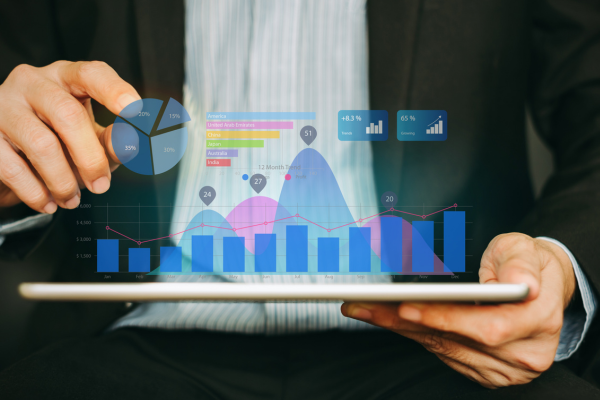
Sustainability reporting is no longer a buzzword. It’s an integral component of a responsible business strategy. In this article, we delve into the intricate web of sustainability reporting, dissecting its origins, evolution, and the pivotal role it plays in addressing environmental concerns.
Introduction
Sustainability reporting is more than just a corporate requirement. It’s a powerful tool that allows organizations to communicate their environmental impact effectively. Understanding its essence is crucial in this era of climate-conscious consumers and stakeholders. This article serves as your compass to navigate the labyrinth of sustainability reporting, and how to make it work for you.
What is Sustainability Reporting?
Sustainability reporting, in essence, is the practice of disclosing an organization’s economic, environmental, and social performance. It transcends mere numbers, revealing the profound implications of a company’s actions on the world around it. It’s the way businesses open up, sharing their sustainability journey.
The Evolution of Sustainability Reporting

Once a regulatory obligation, sustainability reporting now treads the path of voluntary disclosure. This transformation signifies a global shift in corporate consciousness. It’s a transition from fulfilling mandates to embracing the principles of transparency, accountability, and sustainability.
This change didn’t happen in isolation. It was catalyzed by international frameworks and standards. Organizations now dance to the tune of guidelines such as the Global Reporting Initiative (GRI), Sustainability Accounting Standards Board (SASB), and the Task Force on Climate-related Financial Disclosures (TCFD). These standards provide a harmonious rhythm for companies to follow, ensuring their sustainability reports are in tune with global expectations.
Why Effective Communication Matters
Transparency isn’t just a buzzword. It’s the bedrock of trust in the modern business landscape. Sustainability reporting, when done right, becomes a catalyst for trust. It shows that a company is willing to bear all, warts and all.
However, it’s not just about trust. It’s about attracting the right kind of attention. Investors, customers, and partners are increasingly looking for more than just financial figures. They want to align with brands that care about the planet, society, and their impact on both.
Legally, the significance of effective communication is underscored by the requirement for businesses to fulfill reporting obligations, depending on the region and industry.
Types of Sustainability Reports
Sustainability reports come in various forms, catering to different audiences and purposes. The most common are the Annual Sustainability Reports, Integrated Reports, and Specialized Environmental Reports.
The Annual Sustainability Report provides a comprehensive overview of an organization’s sustainability performance. It’s akin to a year-end summary, showcasing achievements and challenges in one comprehensive document.
Integrated Reports, on the other hand, merge sustainability data with financial information. They present a holistic view of a company’s value creation process, illustrating the interconnectedness of financial, social, and environmental aspects.
Specialized Environmental Reports zoom in on specific environmental indicators and metrics. These reports often target stakeholders with a keen interest in a company’s environmental practices.
Steps to Prepare a Sustainability Report
Preparing a sustainability report involves meticulous planning and execution. It’s a multi-step process that includes data collection and measurement, stakeholder engagement, and materiality assessment.
- Data collection and measurement are the foundational steps. These involve gathering data on various environmental aspects, such as greenhouse gas emissions, water usage, and waste management. Accurate data is the bedrock upon which your sustainability report stands.
- Stakeholder engagement involves interacting with various parties invested in your sustainability performance. This includes customers, employees, investors, and local communities. Their input helps shape the report’s content and ensures that it resonates with the concerns of all involved.
- Materiality assessment focuses on determining which sustainability aspects are most relevant to your organization and stakeholders. This step helps prioritize the information to be included in the report, emphasizing what truly matters.
Common Challenges in Sustainability Reporting
Sustainability reporting isn’t without its challenges. Data accuracy and verification are paramount, ensuring the information presented is reliable. Determining the scope and boundaries of your report is another hurdle – what aspects to include, and what to leave out? The selection of relevant key performance indicators (KPIs) is also crucial to effectively measure and communicate your environmental impact.
Choosing the Right Reporting Framework

Selecting the right framework is vital to ensuring that your sustainability report aligns with global expectations. The Global Reporting Initiative (GRI) provides a comprehensive set of guidelines for reporting on economic, environmental, and social aspects. The Sustainability Accounting Standards Board (SASB) focuses on industry-specific standards, ensuring reports are tailored to the unique challenges of different sectors. The Task Force on Climate-related Financial Disclosures (TCFD) emphasizes the importance of disclosing climate-related risks and opportunities.
Crafting a Compelling Message
Sustainability reporting isn’t just about numbers and charts. It’s a storytelling opportunity. Balancing your successes and challenges in an honest and engaging manner is essential. This narrative can transform your report from a dry document into a compelling story that resonates with your stakeholders.
Making Use of Visuals and Infographics

Numbers alone can be overwhelming. Visuals and infographics are powerful tools for simplifying complex data. They make the information more accessible and engaging. When used effectively, they can enhance your sustainability report’s impact.
The Role of Technology in Sustainability Reporting
In the digital age, technology plays a pivotal role in simplifying the sustainability reporting process. Software and tools for data management streamline data collection and reporting. Online platforms make it easier to publish and disseminate your report to a broader audience.
Addressing Environmental Impact Metrics
Your sustainability report should delve into environmental impact metrics. These include measuring your carbon footprint, tracking water usage, and detailing waste management practices. These metrics provide a clear picture of your environmental performance.
Stakeholder Engagement and Feedback
Your stakeholders are your most valuable allies in the sustainability reporting journey. Inclusivity is key – involving their voices ensures your report accurately represents their concerns. Furthermore, responding to feedback and concerns demonstrates your commitment to continuous improvement.
Sustainability Reporting Best Practices
To excel in sustainability reporting, you should establish clear objectives, track progress regularly, and consider independent verification. Setting goals, measuring performance, and having an external party verify your report’s accuracy all contribute to a trustworthy and impactful sustainability report.
Case Studies in Effective Sustainability Reporting
The best way to learn is from the success of others. By examining case studies from leading companies, you can gain insights into what makes a sustainability report effective. These real-world examples showcase how businesses have navigated the complexities of sustainability reporting.
Navigating Legal and Regulatory Landscape
Compliance with local and global laws and regulations is essential. The landscape of sustainability reporting is continually evolving, with new requirements emerging. Staying informed about these changes is crucial to avoid legal pitfalls.
The Connection Between Sustainable Business Practices and Reporting
Sustainability reporting isn’t just a compliance task; it’s a driver of positive change. It encourages businesses to adopt sustainable practices, creating a virtuous cycle where reporting and action reinforce each other. The benefits extend beyond compliance to tangible improvements in environmental and social performance.

The Future of Sustainability Reporting
Sustainability reporting isn’t static. It’s continually evolving to meet changing expectations and address emerging challenges. This section explores the trends and innovations that will shape the future of sustainability reporting, as well as the development of new global standards.
Sustainable Investing and Shareholder Activism
Investors and shareholders are increasingly using sustainability reports as tools for decision-making and activism. Companies that fail to meet sustainability expectations may face shareholder pressure and even divestment. Understanding the impact of reporting on investment decisions is crucial for modern businesses.
Overcoming the Fear of Greenwashing
Balancing ethical reporting with the fear of being perceived as “greenwashing” can be a challenge. Greenwashing refers to the deceptive use of sustainability marketing tactics. Building credibility over time through consistent and honest reporting is the antidote to this fear.
Tools and Resources for Sustainability Reporting
The tools and resources available for sustainability reporting are numerous. Reporting guidelines and templates, expert consultation, and training programs can support organizations in their reporting journey. These resources simplify the process and ensure that your report aligns with industry best practices.
Preparing for the Reporting Process
The reporting process requires a structured approach. Building an internal team with the right expertise, defining timelines, and setting milestones are essential to ensure that your report is prepared effectively and on schedule.
Common Myths and Misconceptions About Reporting
Misconceptions about sustainability reporting are common. Dispelling these myths is vital. Some falsely believe that sustainability reporting is just PR, while others argue that it’s a luxury only large corporations can afford. These misconceptions hinder progress in sustainable reporting.
Measuring the Impact of Sustainability Reporting

Understanding the impact of your sustainability reporting efforts is essential. How do you gauge the effectiveness of your reports? Are they driving positive change? This section provides insights into measuring and improving the impact of your sustainability reporting.
Conclusion
Sustainability reporting is more than a corporate obligation; it’s a catalyst for change. It has the power to transform businesses into transparent, responsible, and impactful entities. By embracing sustainability reporting and communicating your environmental impact effectively, you can contribute to a greener, more accountable future.



